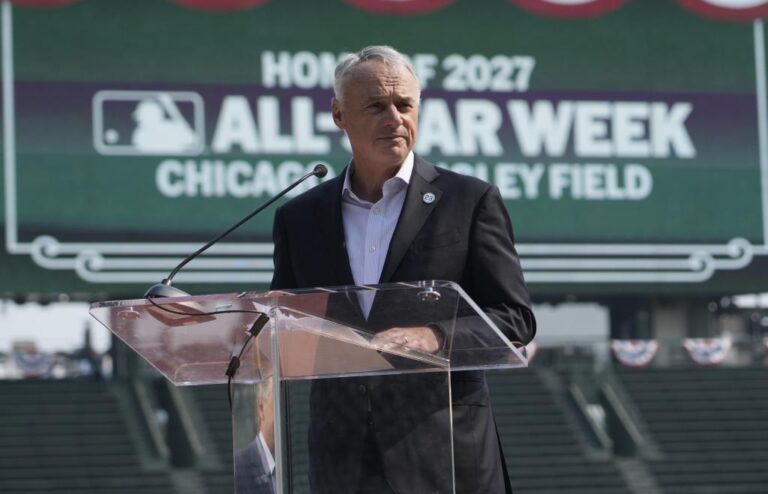MLB Division Realignment: What to Expect as Rob Manfred Hints at Changes
Major League Baseball (MLB) Commissioner Rob Manfred recently stirred excitement among fans and analysts alike by suggesting that geographical realignment of divisions could be on the horizon. This potential shift aims not only to enhance the fan experience but also to make travel logistics for players more efficient.
The Future of MLB: Realignment on the Table
During a recent appearance on ESPN’s broadcast of the Little League Classic, featuring the Mets and Mariners, Manfred touched on two major topics: expansion and division realignment.
“I think if we expand, it provides us with an opportunity to geographically realign,” said Manfred. “This could save a lot of wear and tear on our players in terms of travel.”
The Implications of Geographical Realignment
-
Reduced Travel Time: By redesigning the divisions geographically, the travel burden on players could be minimized, potentially increasing player performance and health.
- Postseason Format: A realignment could also make the postseason more appealing to broadcasters like ESPN, allowing for the inclusion of teams from both the East and West in a more dynamic playoff structure.
Potential Expansion Cities
While the last team expansion occurred in 1998 with the addition of the Arizona Diamondbacks and Tampa Bay Rays, the league is looking towards cities that could host future franchises. Nashville is among those being considered seriously. Manfred believes there is a growing demand for baseball in various cities:
“I think the owners realize there is demand for Major League Baseball in a lot of great cities, and we have an opportunity to do something good around that expansion process.”
The End of AL and NL?
Should a realignment occur, it’s possible that the traditional American and National Leagues could be dissolved. This would mirror the format used by other professional sports leagues like the NBA and NHL, creating a more coherent approach to scheduling and playoff structures.
Key Takeaways
- Rob Manfred’s Vision: The commissioner aims to add two more teams to MLB before his term ends in 2029.
- Impact on Players and Fans: Reduced travel could enhance player health while increasing fan engagement through regional matchups.
- Historic Changes Ahead: If realized, this realignment will represent one of the most significant shifts in MLB history, particularly in the context of changing rules and formats.
For those interested in keeping up with MLB developments, follow opportunities for expansion and potential changes to the divisions as they unfold.
Conclusion
With MLB exploring geographical realignment and potential expansion, fans are left buzzing with anticipation over what the future may hold. In this rapidly evolving sports landscape, changes are not just on the field; they extend to the structure and functioning of the league itself.
For more insights into MLB’s possible future and realignment details, stay tuned to credible sports news sources.


